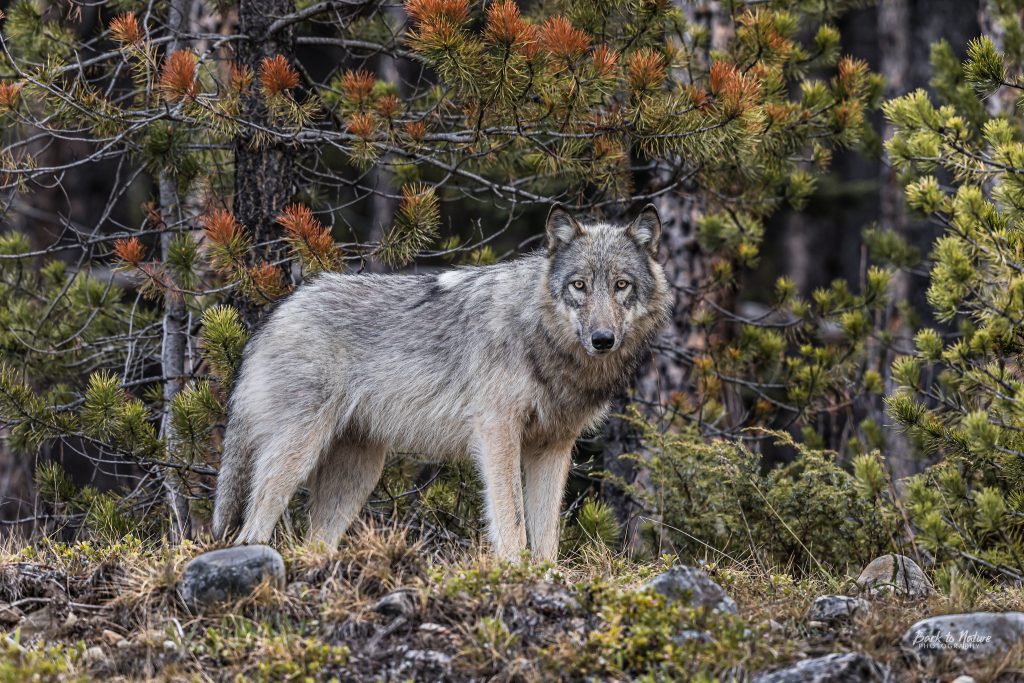Which nocturnal animals are we likely to see on Halloween night?

Wolf at Banff National Park. KELTIE MASTERS
Bats, owls, crows, toads, spiders, and wolves are the wild animals we traditionally associate with Halloween. However, by October 31st, many of these creatures are either hibernating or have migrated to warmer places. Alberta’s four toad species (Canadian toad, Great Plains toad, western toad, and plains spadefoot toad) burrow into the ground before it freezes and go dormant. Outdoor-dwelling spiders may have died off, while some species hibernate, but you might still find a few lingering in dark corners of haunted houses. (And check out the Winter 2023 edition of Ask Stuart to read about spiders that spend winter active under the snow!) Among our more common bat species, the little brown myotis, the hoary bat, and the silver-haired bat begin migration south by late August or early September, while the northern myotis and the big brown bat will be hibernating in caves, mines, or old buildings by the end of October. Crows will have flown south for the winter, but common ravens are hardier and, along with several of Alberta’s owl species, remain year-round residents, as do wolves. Depending on where in Alberta you live, your Halloween night could be accompanied by the spooky sounds of hooting owls, cackling ravens, and howling wolves!
